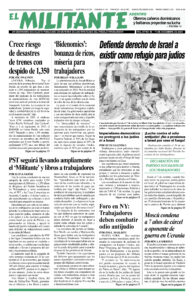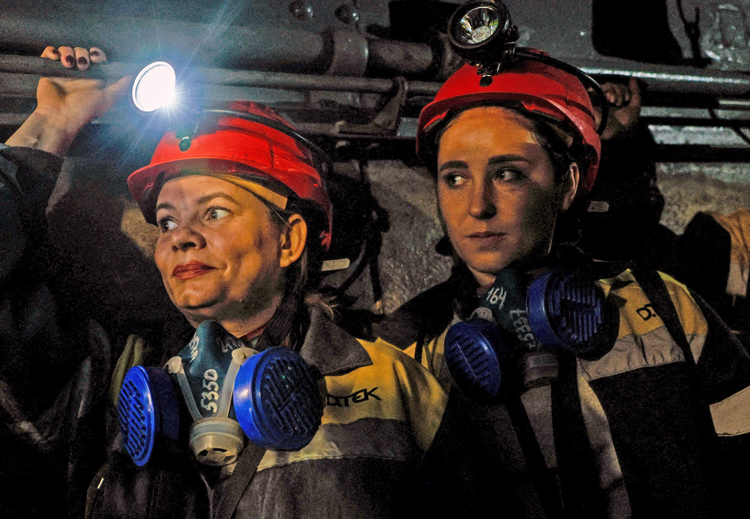More than 100 women are today working underground at the Pavlohradska coal mine in southeastern Ukraine. This is the first time that women have been hired to work underground since the counterrevolutionary regime of Joseph Stalin barred women from doing so. Since the collapse of the Soviet Union in 1991, Ukrainian government policy has remained that women cannot work underground, claiming it’s too physically demanding.
Of the 4,000 male workers in this mine and another one nearby, 1,000 are now fighting on the Ukrainian frontlines against Russia’s invading forces. Forty-two have been killed and hundreds wounded.
“Our boys were taken to the front, and now we need to support them,” 22-year-old miner Krystyna told Reuters Nov. 22. For five months she has worked 1,500 feet below ground, maintaining the batteries of mine trains that transport workers 2 miles from the lift shaft to the coal seams.
Despite “the fumes from the batteries when they are charging” and the hard-to-lift battery lights, Krystyna says, “I like working here.” She added, “We cannot go on for other jobs leaving our boys down.”
Krystyna’s older brother worked at the same mine, but joined the army two weeks after Moscow’s invasion last year. Her mother takes care of Krystyna’s 4-year-old son in Pavlohrad, the nearest town, which is often targeted by Russian missiles.
The Pavlohradska mine is operated by DTEK, owned by Ukraine’s wealthiest capitalist, Rinat Akhmetov. It has some 20,000 miners nationwide. Of those, nearly 3,000 have volunteered to fight in the war. About 400 women now work underground at DTEK mines.
Natalia, 43 years old, is a mine technician and electrician who works with Krystyna at Pavlohradska. She used to work in a store selling washing machines. “I think in the future even more women will want to work here. We already have women that work as mine lift operators. We work as electricians,” she said. “There are even some women working on the mine face.” Natalia wants to stay working in the mine even after the war.
At the Ternivka mine next to Pavlohradska, Oksana, a 49-year-old dance teacher, works shoveling coal and maintaining the conveyor belt. Her father and oldest son were killed by Russian forces. “I’ve immersed myself in my work,” she told the Economist, and has no intention of leaving. “It’s no longer as scary as war,” she said.
Another miner there, Olena, is training to operate the trains that connect sections of the mine. Her husband, a former miner, commands a platoon near Luhansk.


